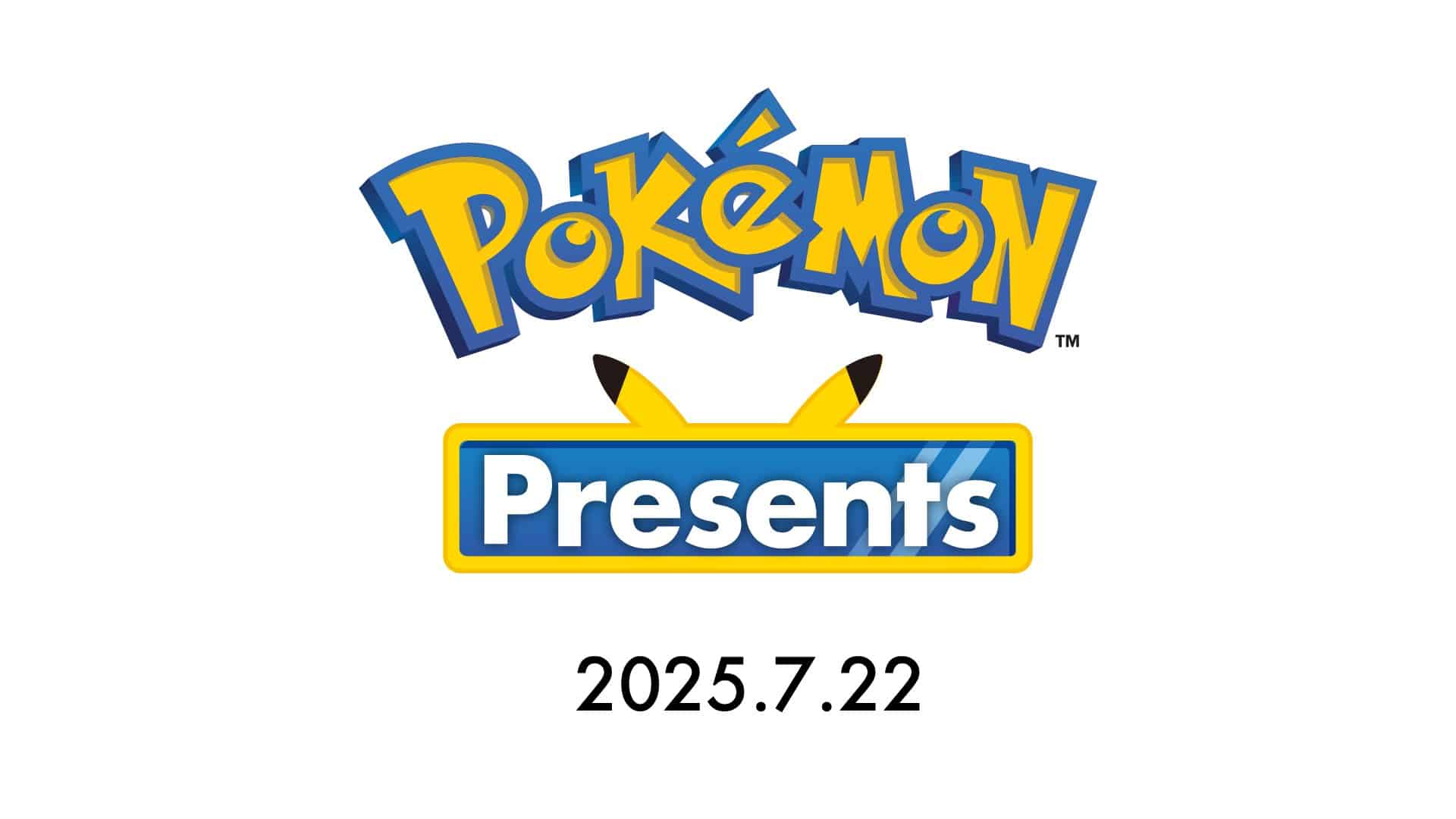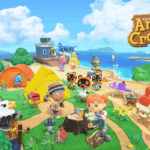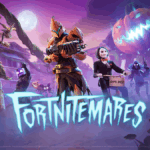The Pokémon Company has officially announced a major Pokémon Presents livestream set for Tuesday, July 22, 2025, with the presentation to be broadcast globally via the official Pokémon YouTube channel. Although the exact time is still pending, the date is locked—and fans are already buzzing with speculation about what’s to come.
All signs point toward this being one of the most important Pokémon events of the year, with a spotlight on the highly anticipated Pokémon Legends: Z-A and broader updates across the franchise.
The Headliner: Pokémon Legends: Z-A
Slated for release on October 16, 2025, Pokémon Legends: Z-A is shaping up to be one of the most ambitious Pokémon titles to date. As the second entry in the Legends sub-series—following 2022’s Pokémon Legends: Arceus—Z-A shifts the focus from historical worldbuilding to a futuristic, urban reimagining of Lumiose City, originally introduced in Pokémon X and Y.
Unlike previous mainline games, Z-A embraces a real-time battle system, offering dynamic movement and action-based mechanics that blend RPG exploration with a fresh combat feel. This evolution promises a more immersive and challenging experience, especially when paired with the returning Mega Evolution system, now reimagined for this new gameplay foundation.
Innovations to Expect:
- Single-City Open World: Lumiose City acts as the game’s central and possibly only location, designed as a sprawling, explorable urban environment.
- Real-Time Combat: Breaking from turn-based tradition, the new battle system emphasizes positioning, dodging, and timing.
- Mega Evolution Returns: Fan-favorite Mega Evolutions are back in a big way, expected to be central to both gameplay and the narrative.
- Next-Gen Enhancements: While the game will be available on the current Nintendo Switch, a Nintendo Switch 2 Edition is confirmed to offer improved performance and visual fidelity. A paid upgrade path is rumored for those switching consoles.
Beyond Z-A: What Else Might Be Revealed?
While Pokémon Legends: Z-A will undoubtedly be the star of the show, Pokémon Presents events often cover the full ecosystem of games, apps, and multimedia projects. Here’s what else could make an appearance:
Pokémon Champions
Announced earlier this year, Pokémon Champions is a turn-based strategy RPG currently in development. Set in a multiverse where champions from across the Pokémon world gather, the game is expected to feature grid-based tactics, squad customization, and online competition. This would be the perfect venue for a gameplay reveal or beta announcement.
Mobile Games & Live Services
- Pokémon GO: Expect updates tied to upcoming summer events, crossovers with Z-A, or new regional Pokémon.
- Pokémon Masters EX: New sync pairs and special campaigns tied to Legends: Z-A seem likely.
- Pokémon TCG Pocket: The card-collecting mobile app may receive a new expansion reveal or collaborative events.
- Pokémon UNITE: A new playable character, themed skins, or Legends: Z-A content could be introduced.
Pokémon Horizons & Concierge
- The Pokémon anime Horizons might tease upcoming episodes that tie into Z-A or spotlight new characters and Pokémon.
- Pokémon Concierge, the Netflix claymation series, could announce a second season or special episode.
Generation 10: Too Soon?
While fans are always eager for news of the next core generation, the release cadence makes it unlikely that Generation 10 will be formally revealed at this event. With Z-A launching this October and the Switch 2 still building its launch library, a Gen 10 announcement may be held for late 2026. That said, subtle hints—like logos, artwork, or cryptic messages—are always a possibility during Pokémon Presents.
Pre-Order Bonuses and Collector Hype
Pre-orders for Pokémon Legends: Z-A open June 5, 2025, via the Nintendo eShop and at physical retailers. The Pokémon Center has confirmed special pre-order bonuses in the form of random Sitting Cuties plushies—Chikorita, Tepig, or Totodile—for U.S., Canada, and U.K. customers (while supplies last). Additional early buyer incentives, such as in-game items or Switch 2 cross-save features, may be detailed during the livestream.
How to Watch the July 22 Pokémon Presents
The livestream will air on Tuesday, July 22, 2025, and can be viewed via the official Pokémon YouTube channel. While the start time has not yet been announced, past presentations suggest a morning broadcast for North American audiences (around 6:00 a.m. PT / 9:00 a.m. ET). Stay tuned to Pokémon’s social channels for the official timing as the date approaches.
Final Thoughts
With a new era of gameplay, cross-platform ambitions, and major multimedia expansions on the horizon, the July 2025 Pokémon Presents is shaping up to be one of the franchise’s most defining moments in recent memory. Whether you’re a veteran trainer or a newcomer drawn in by the evolution of the series, July 22 is a date to mark on your Poké-calendar.
Pokemon Games in Order
Pokémon games have captivated players since 1996, creating a legacy that spans multiple generations of consoles and fans. From the original Red and Blue versions to the latest releases, these games have evolved while maintaining the core catching and battling gameplay that millions love. The main Pokémon games are best experienced either chronologically by in-game timeline or in release order, starting with Red and Blue (1996) and continuing through eight generations of titles up to the present day.
For newcomers to the franchise, understanding the sequence helps provide context to the evolving mechanics and features. Each generation introduces new Pokémon, regions, and gameplay elements while building upon the foundation established by earlier titles. The series began on the Game Boy, expanded to Game Boy Color and Advance, then moved through Nintendo DS, 3DS, and now thrives on the Switch.
The Pokémon main series games are typically released in generations, often with enhanced versions or remakes within the same generation. Here’s a list of the mainline Pokémon games in release order, along with their respective generations:
Generation I (Game Boy)
- Pokémon Red and Green (Japan, 1996)
- Pokémon Blue (Japan, 1996)
- Pokémon Red and Blue (International, 1998)
- Pokémon Yellow (1998)
Generation II (Game Boy Color)
- Pokémon Gold and Silver (1999)
- Pokémon Crystal (2000)
Generation III (Game Boy Advance)
- Pokémon Ruby and Sapphire (2002)
- Pokémon FireRed and LeafGreen (2004) – Remakes of Red and Green
- Pokémon Emerald (2004)
Generation IV (Nintendo DS)
- Pokémon Diamond and Pearl (2006)
- Pokémon Platinum (2008)
- Pokémon HeartGold and SoulSilver (2009) – Remakes of Gold and Silver
Generation V (Nintendo DS)
- Pokémon Black and White (2010)
- Pokémon Black 2 and White 2 (2012) – Direct sequels
Generation VI (Nintendo 3DS)
- Pokémon X and Y (2013)
- Pokémon Omega Ruby and Alpha Sapphire (2014) – Remakes of Ruby and Sapphire
Generation VII (Nintendo 3DS / Nintendo Switch)
- Pokémon Sun and Moon (2016)
- Pokémon Ultra Sun and Ultra Moon (2017)
- Pokémon: Let’s Go, Pikachu! and Let’s Go, Eevee! (2018) – Remakes of Yellow, released on Switch
Generation VIII (Nintendo Switch)
- Pokémon Sword and Shield (2019)
- The Isle of Armor (DLC, 2020)
- The Crown Tundra (DLC, 2020)
- Pokémon Brilliant Diamond and Shining Pearl (2021) – Remakes of Diamond and Pearl
- Pokémon Legends: Arceus (2022)
Generation IX (Nintendo Switch)
- Pokémon Scarlet and Violet (2022)
- The Teal Mask (DLC, 2023)
- The Indigo Disk (DLC, 2023)
- Pokémon Legends: Z-A (Expected 2025)
Key Takeaways
- Pokémon games can be played in release order (starting with Red/Blue) or by generation groupings to experience how the series evolved over time.
- Each generation introduces new regions, Pokémon species, and gameplay mechanics while maintaining the core catching and battling systems.
- Remakes of older games provide modern alternatives to experience classic adventures with updated graphics and features.
History of Pokémon Games
The Pokémon video game series has evolved dramatically since its humble beginnings in the 1990s. What started as simple Game Boy titles has grown into a complex franchise spanning multiple generations of gaming hardware.
Beginnings with Pokémon Red and Green
Pokémon began in Japan on February 27, 1996, when Game Freak released Pokémon Red and Green for the Game Boy. These games introduced the core catching and training mechanics that would define the series.
International audiences first experienced Pokémon through Red and Blue versions in 1998, with Pokémon Yellow following in 1999. The first generation featured 151 Pokémon and established the formula of collecting gym badges and becoming a Pokémon Champion.
These early games, despite their technical limitations, created a foundation for what would become one of gaming’s most successful franchises. The simple pixel graphics and turn-based battles proved incredibly addictive.
Advancements and Iterations
The second generation arrived with Gold and Silver in 1999-2001, adding 100 new Pokémon and introducing features like breeding, day/night cycles, and held items. Crystal version followed with minor improvements.
Ruby, Sapphire, and Emerald (2002-2005) marked the third generation, bringing the total Pokémon count to 386. This era introduced double battles, Pokémon contests, and secret bases.
The fourth generation (2006-2009) included Diamond, Pearl, and Platinum, plus remakes of the original games with FireRed and LeafGreen. These titles added online functionality and the physical/special attack split that dramatically improved battle strategy.
Black and White launched the fifth generation (2010-2012), featuring an entirely new Pokédex of 156 Pokémon and a more story-focused approach.
Transition to Portable Gaming Systems
As Nintendo hardware evolved, so did Pokémon. The series shifted from Game Boy to Game Boy Advance, then to Nintendo DS and 3DS systems.
X and Y (2013) marked a significant change as the first mainline games with full 3D environments and characters. These sixth-generation games introduced Mega Evolution and customizable trainers.
Sun and Moon (2016) and their Ultra versions reimagined the gym challenge formula with Island Trials. They also introduced regional variants of classic Pokémon and Z-moves.
Let’s Go Pikachu and Let’s Go Eevee (2018) served as remakes of Yellow with Pokémon GO integration, creating a bridge between mobile and console gaming.
Exploring the Third Dimension
The move to 3D visuals transformed how players experienced the Pokémon world. Characters became more expressive, and environments gained depth and detail.
Omega Ruby and Alpha Sapphire (2014) reimagined the third generation with modern graphics and gameplay improvements. These remakes added new Mega Evolutions and post-game content.
The seventh generation (Sun, Moon, Ultra Sun, Ultra Moon) pushed the 3DS hardware to its limits with more cinematics and detailed character models. These games introduced powerful Z-Moves and regional variants.
Pokémon Legends: Arceus (2022) took a bold step toward open-world gameplay with a historical setting. This spin-off explored new action-oriented catching mechanics while maintaining turn-based battles.
Modern Era on Nintendo Switch
Pokémon made its mainline debut on Nintendo Switch with Sword and Shield (2019). These games introduced Dynamax transformations, Wild Areas with free camera control, and raid battles.
Brilliant Diamond and Shining Pearl (2021) brought faithful remakes of the fourth generation to Switch, maintaining the classic top-down perspective while updating graphics.
Scarlet and Violet (2022) marked the series’ first true open-world experience. Players could tackle gyms in any order and explore a vast region without loading screens. These games introduced the Terastal phenomenon and riding legendary Pokémon.
The Switch era has seen Pokémon experimenting with both traditional and innovative approaches, balancing nostalgia with fresh ideas to keep the franchise relevant after nearly three decades.
Comprehensive List of Main Series Pokémon Games
The Pokémon franchise has released numerous main series games across nine generations, starting with the original Red and Blue versions in 1996. Each generation introduces new Pokémon, regions, and gameplay mechanics while building upon the core catch-and-battle formula.
The Original Series
The journey began with Pokémon Red and Blue (1996) for the Game Boy, introducing 151 Pokémon and the Kanto region. These games established the core gameplay elements that would define the series.
Pokémon Yellow (1998) followed as an enhanced version inspired by the anime, featuring Pikachu as a starter that followed the player character outside its Poké Ball.
The series received complete remakes with Pokémon FireRed and LeafGreen (2004) for Game Boy Advance, updating the graphics and adding new features while preserving the original story.
Pokémon Gold and Silver (1999) expanded the world with 100 new Pokémon and the Johto region. These games introduced day/night cycles, breeding, and let players return to Kanto after completing the main story.
Pokémon Crystal (2000) enhanced Gold and Silver with animated Pokémon sprites and the Battle Tower.
The Advanced Generation Series
Pokémon Ruby and Sapphire (2002) brought the series to Game Boy Advance with 135 new Pokémon and the tropical Hoenn region. These games introduced double battles, Pokémon Contests, and secret bases.
Pokémon Emerald (2004) combined elements from Ruby and Sapphire while adding the Battle Frontier challenge area.
The second generation received remakes with Pokémon HeartGold and SoulSilver (2009) for Nintendo DS. These beloved versions included the Pokéwalker accessory, allowing players to take their Pokémon on walks in real life.
Ruby and Sapphire were later remade as Pokémon Omega Ruby and Alpha Sapphire (2014) for the 3DS, adding Mega Evolution and updated 3D graphics.
The Diamond and Pearl Series
Pokémon Diamond and Pearl (2006) debuted on the Nintendo DS with 107 new Pokémon and the Sinnoh region. These games utilized the DS’s dual screens and introduced online play through the Global Trade System.
Pokémon Platinum (2008) expanded on Diamond and Pearl with a revised story, the Distortion World, and an enhanced Battle Frontier.
In 2021, Diamond and Pearl received remakes as Pokémon Brilliant Diamond and Shining Pearl for the Nintendo Switch, featuring chibi-style overworld graphics and faithful recreation of the original games.
The series also saw a unique prequel with Pokémon Legends: Arceus (2022), set in ancient Sinnoh (then called Hisui) with open-world gameplay elements.
The Black and White Series
Pokémon Black and White (2010) refreshed the formula by introducing 156 new Pokémon and making players use only new creatures until completing the main story. Set in the Unova region, these games featured more cinematic elements and seasonal changes.
Unlike previous generations, Black and White received direct sequels instead of a third version. Pokémon Black 2 and White 2 (2012) continued the story two years later with new areas, Pokémon distributions, and the Pokémon World Tournament.
These games remain the only mainline Pokémon titles to feature direct story sequels rather than enhanced versions of the same story.
The X and Y Series
Pokémon X and Y (2013) marked the series’ transition to full 3D on the Nintendo 3DS. Set in the France-inspired Kalos region, these games introduced 72 new Pokémon and Mega Evolution, a temporary power-up for certain Pokémon during battles.
X and Y also added customizable player characters, roller skates for movement, and Pokémon-Amie, a feature for interacting with Pokémon to strengthen bonds.
Unlike other generations, X and Y never received an enhanced version or remake, making them unique in the franchise’s history.
The Sun and Moon Series
Pokémon Sun and Moon (2016) took place in the tropical Alola region, based on Hawaii. These games removed traditional gym battles in favor of Island Trials and introduced 81 new Pokémon and regional variants of classic Pokémon.
Z-Moves provided one-time powerful attacks, and the Rotom Pokédex served as both a guide and map. Ultra Beasts, powerful creatures from another dimension, created a new category of legendary encounters.
Pokémon Ultra Sun and Ultra Moon (2017) expanded the story with the Ultra Recon Squad and added more Ultra Beasts and legendaries to catch.
The Sword and Shield Series
Pokémon Sword and Shield (2019) brought the series to Nintendo Switch, introducing the UK-inspired Galar region and 81 new Pokémon. These games featured the Wild Area, an open-world zone where Pokémon roam visibly.
Dynamaxing and Gigantamaxing allowed Pokémon to grow enormous in specific battles, adding a spectacular element to Gym battles in massive stadiums.
The Isle of Armor and Crown Tundra (2020) expansion passes added new areas, Pokémon, and story content instead of releasing an enhanced third version.
Pokémon Legends: Arceus (2022), while set in Sinnoh’s past, incorporated elements from this generation while experimenting with open-world gameplay.
Future and Upcoming Titles
Pokémon Scarlet and Violet (2022) embraced a full open-world design in the Spain-inspired Paldea region. These games introduced the Terastal phenomenon, allowing Pokémon to change types during battle.
Three distinct story paths gave players freedom in progression, and the ability to freely explore with legendary Pokémon mounts transformed traversal.
The Teal Mask and The Indigo Disk DLC expansions (2023) added new areas, Pokémon, and storylines.
While no formal announcements have been made for Generation 10 as of March 2025, the pattern of releasing
Frequently Asked Questions
Players often have many questions about Pokémon games and their proper order. These FAQs address common concerns about game chronology, platform availability, and recommendations for new players.
What is the chronological release order of Pokémon games?
The main series Pokémon games began with Red and Blue (1996 in Japan, 1998 in North America), followed by Yellow (1998/1999). Gold and Silver came next (1999/2000), then Ruby and Sapphire (2002/2003).
FireRed and LeafGreen (2004) were remakes of the original games. Diamond and Pearl (2006/2007) followed, with Platinum (2008/2009) enhancing the Gen 4 experience.
HeartGold and SoulSilver (2009/2010) revitalized Gen 2. Black and White (2010/2011) started Gen 5, with Black 2 and White 2 (2012) being direct sequels rather than enhanced versions.
X and Y (2013) launched Gen 6, with Omega Ruby and Alpha Sapphire (2014) revisiting Gen 3. Sun and Moon (2016) began Gen 7, later followed by Ultra Sun and Ultra Moon (2017).
Which Pokémon games are available for Nintendo Switch, listed in order of their release?
The Nintendo Switch Pokémon lineup started with Pokémon: Let’s Go, Pikachu! and Let’s Go, Eevee! in November 2018. These games are remakes of Pokémon Yellow with Pokémon GO integration.
Pokémon Sword and Shield followed in November 2019, introducing the Galar region. Their expansion passes (Isle of Armor and Crown Tundra) released in 2020.
Brilliant Diamond and Shining Pearl launched in November 2021, faithfully remaking the Gen 4 games. Pokémon Legends: Arceus arrived in January 2022, offering an open-world historical setting.
The most recent main entries are Scarlet and Violet, released in November 2022, featuring an open-world design and three distinct story paths.
How are Pokémon games traditionally ranked?
Pokémon games are often ranked based on several factors including innovation, story quality, Pokémon designs, and gameplay features. HeartGold/SoulSilver frequently top fan lists for their extensive content and quality-of-life improvements.
Black and White are praised for their mature storytelling and completely new Pokédex. Emerald and Platinum are considered the definitive versions of their respective generations.
Many fans rank games based on nostalgic value, with Red/Blue/Yellow holding special places despite technical limitations. More recent games are evaluated on their graphical improvements and new mechanics.
Competitive players may rank games differently, focusing on battle mechanics, competitive balance, and online features rather than story elements or exploration.
Can you provide a comprehensive list of all Pokémon games released?
The main series includes: Red/Blue/Yellow, Gold/Silver/Crystal, Ruby/Sapphire/Emerald, FireRed/LeafGreen, Diamond/Pearl/Platinum, HeartGold/SoulSilver, Black/White, Black 2/White 2, X/Y, Omega Ruby/Alpha Sapphire, Sun/Moon, Ultra Sun/Ultra Moon, Let’s Go Pikachu/Eevee, Sword/Shield, Brilliant Diamond/Shining Pearl, Legends: Arceus, and Scarlet/Violet.
Spin-offs include multiple Pokémon Mystery Dungeon titles, Pokémon Ranger series, Pokémon Snap (1999) and New Pokémon Snap (2021), Pokémon Stadium games, Pokémon Colosseum and XD, and many more.
Mobile games include Pokémon GO, Pokémon Masters EX, Pokémon Unite, Pokémon Café Mix, Pokémon Sleep, and others. Educational titles like Learn with Pokémon: Typing Adventure exist alongside puzzle games like Pokémon Puzzle League.
In what order should new players experience Pokémon games?
New players can start with any main series game, as each generation stands alone story-wise. However, newer titles like Sword/Shield or Scarlet/Violet offer more modern gameplay and graphics.
Let’s Go Pikachu/Eevee provide a simplified experience ideal for complete beginners. They feature simplified catching mechanics and familiar Kanto Pokémon.
Players interested in experiencing the evolution of the series might start with FireRed/LeafGreen (remakes of the originals) and move forward chronologically. This approach shows how the games developed over time.
Some fans recommend starting with HeartGold/SoulSilver or Platinum, widely considered among the best balanced and feature-rich games in the series.
What are the options for playing Pokémon games on PC?
Official Pokémon games are not directly available for PC, as Nintendo keeps its games exclusive to its own platforms. The Pokémon Company does offer Pokémon TCG Online for computers.
Some older Pokémon games can be played on PC using legal emulators, provided the player owns the original games. Nintendo does not officially support this method.
Fan-made Pokémon games exist for PC, though these are unofficial and not supported by Nintendo or The Pokémon Company. Many of these offer unique regions, stories, and features not found in official titles.
Pokémon-inspired games like Temtem, Coromon, and Monster Sanctuary provide similar monster-collecting gameplay experiences on PC platforms.







